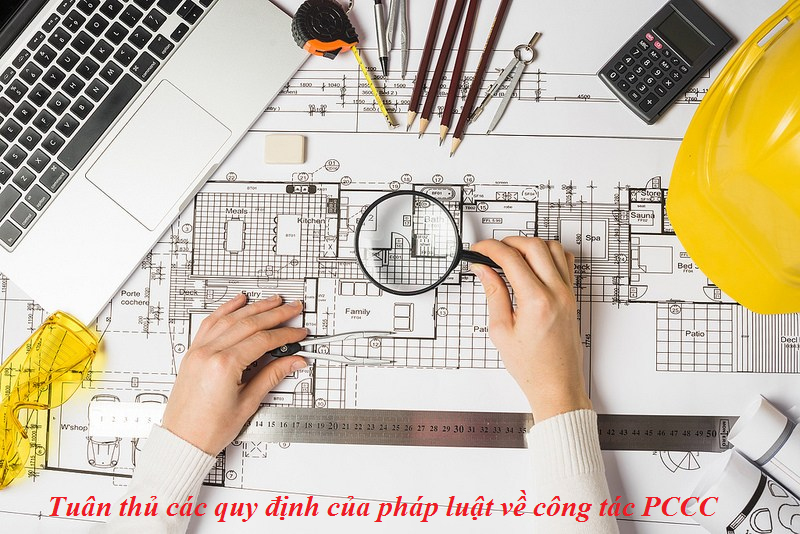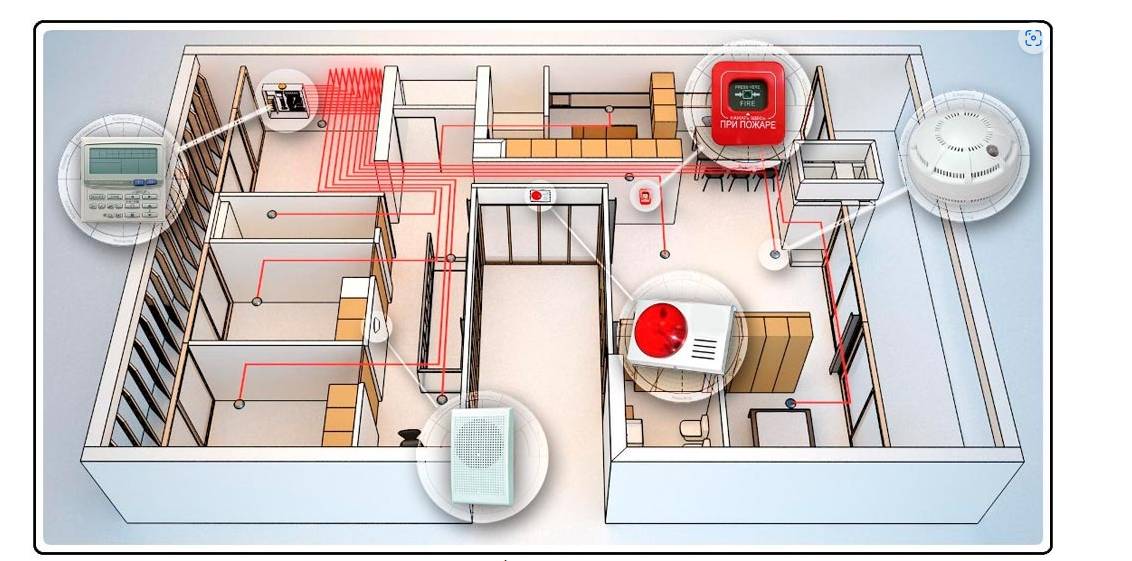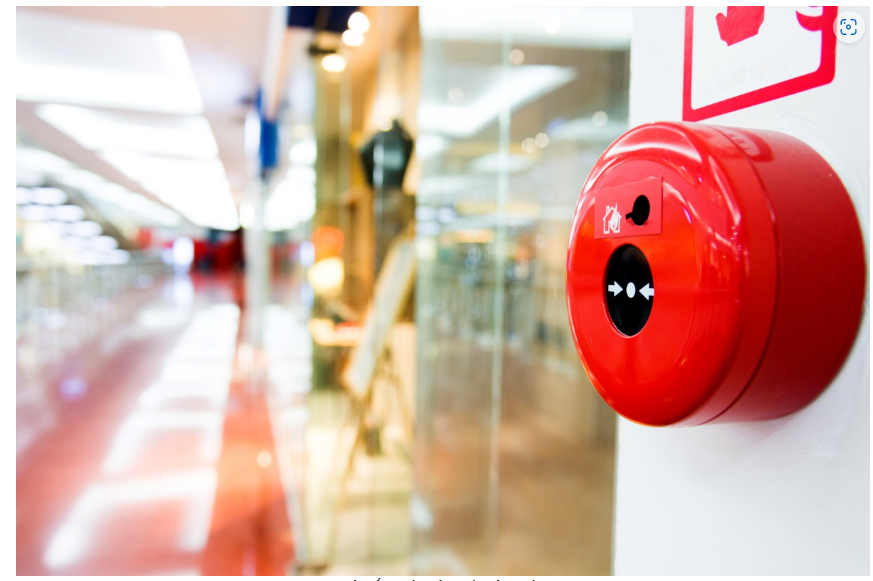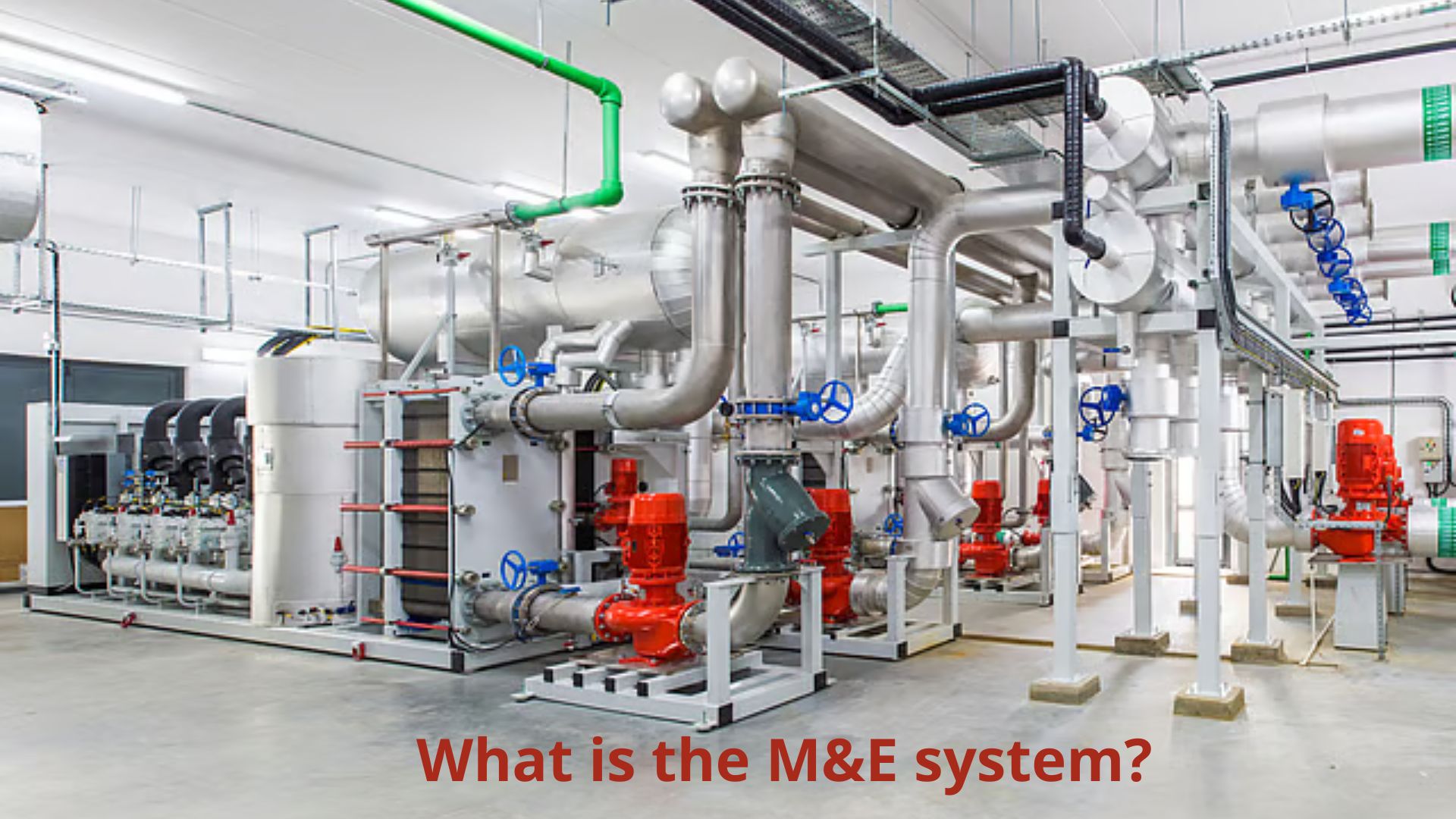The Importance of fire prevention and fighting Design Work for a Fire Protection Project
The design work for fire prevention and fighting plays an extremely important role in every construction project, especially in public buildings and high-rise buildings. First, fire prevention and fighting design ensures the safety of users and property in the event of a fire. This process includes assessing and identifying potential risks, thereby proposing effective fire prevention solutions such as alarm systems, sprinkler systems, fire reporting systems, and effective escape route arrangements.
Secondly, fire prevention and fighting design also plays a crucial role in legal compliance and safety standards. Projects must comply with regulations from authorities regarding fire prevention and fighting, including national and local standards. Non-compliance can lead to legal violations and pose safety risks. Therefore, the design of fire prevention and fighting must be carried out meticulously and accurately.
In summary, fire prevention and fighting design work not only ensures safety but also reflects the professionalism and responsibility of designers towards the community and living environment.

Standards and Regulations for fire prevention and fighting Design
Decree 136/2020 ND-CP issued by the government
Regulation 06-2020/BXD
TCVN 3890:2009 stipulating fire prevention and fighting implementation for residential and construction works, equipment, arrangement, inspection, and maintenance
TCVN 4756:1989 Regulations on grounding and non-grounding of electrical equipment
TCVN 5307:2009 Oil and petroleum product storage – Design requirements
TCVN 5334:2007 Electrical equipment for oil and petroleum products – Safety requirements in design, installation, and use
TCVN 5507:2002 Hazardous chemicals – Safety regulations in production, trading, use, storage, and transportation
TCVN 5684:2003 Fire safety for oil and petroleum construction – General requirements
TCVN 5738:2000 Automatic fire alarm systems – Technical requirements
TCVN 6101:1990 Firefighting equipment – Carbon Dioxide (CO2) fire extinguishing systems in design and installation
TCVN 6160:1996 Fire prevention and fighting for high-rise buildings – Design requirements
TCVN 6223:1996 Liquefied gas shops – General safety requirements
TCVN 6223:2011 Liquefied petroleum gas (LPG) shops – General safety requirements
TCVN 6290:1997 Gas cylinders – Cylinders for permanent gases – Inspection at the time of gas filling
TCVN 6292:1997 Gas cylinders – Refillable welded steel gas cylinders
TCVN 6034:1997 Liquefied gas cylinders – Safety requirements in storage, unloading, and preservation
TCVN 6484:1999 Liquefied petroleum gas (LPG) – Tanker transport – Safety requirements for design, manufacture, and use
TCVN 7161-1:2002 Gas fire extinguishing systems – Physical properties applicable to system design – Part 1: Basic requirements
TCVN 7161-9:2009 Gas fire extinguishing systems – Physical properties and system design – Part 9: HFC 227EA extinguishing agent
TCVN 9206:2012 Electrical equipment standards for residential and public works – Design standards
TCVN 9207:2012 Regulations on electrical wiring design in residential and public works – Design standards
TCVN 2622:1995 Fire prevention and fighting for houses and constructions – Design requirements
TCVN 4879:1989 Regulations on fire prevention – Safety signs
TCVN 5065:1990 Design standards for fire prevention and fighting in hotels
TCVN 6161:1996 Standards for fire prevention and fighting – Markets and shopping centers – Design requirements
TCVN 6379:1998 Standards for firefighting equipment – Fire hydrants – Technical requirements
TCVN 7278-1:2003 Standards and regulations for extinguishing agents – Firefighting foam – Part 1: Technical requirements for low-expansion foam used to spray on non-water-soluble burning liquids
TCVN 7278-2:2003 Firefighting agents – Firefighting foam chemicals – Part 2: Technical requirements for medium and high-expansion foam used to spray on non-water-soluble burning liquids
TCVN 7278-3:2003 Firefighting agents – Firefighting foam chemicals – Part 3: Technical requirements for low-expansion foam used to spray on water-soluble burning liquids
TCVN 48:1996 Fire prevention and fighting for commercial and service enterprises – General regulations

Things to Note When Designing and Implementing fire prevention and fighting
Fire prevention and fighting design is the design that follows the basic construction phase, where fire prevention and fighting system designers need to analyze all construction components as part of a comprehensive package. The design of any fire prevention and fighting system must be rigorous, accurate, scientific, appropriate, and economical. It must also harmonize with other systems within the same construction.
The details in fire prevention and fighting systems are very complex and vary for each building. Each system is designed optimally but is only suitable and applicable for a specific building undergoing renovation or a completely new building. Each project has its own characteristics, so it needs to be designed with specific goals to ensure effective fire prevention and fighting.
Important Note: The process of designing a fire prevention and fighting system is always a comprehensive process, whether we are constructing new or renovating a building. Investors, management, architects, engineers, contractors, and consultants all need to participate in the planning and design process of the fire prevention and fighting system. It is essential to fully understand the issues and concerns of all different parties involved to avoid affecting other related systems within the same building.
When designing and implementing fire prevention and fighting, designers must pay close attention to complying with all legal regulations regarding fire prevention and fighting. These requirements and regulations always stem from practical experience and serve as standards to evaluate and assess whether the fire prevention and fighting system meets safety requirements.
Basic Requirements for fire prevention and fighting Design and Implementation
During the design process, the fire prevention and fighting system always focuses on several key points:
Ensuring the safety of the lives of people living or working in the building.
Minimizing property damage in the event of a fire.
Ensuring the system is always in good working condition, continuously operational, without affecting daily life and business.
A warehouse or storage area will have different fire prevention and fighting requirements compared to an office building with many tenants. Therefore, the design must ensure it is suitable for the building's functional use. There is no fire prevention and fighting design that is identical to another and can be used interchangeably for different buildings. However, they always have basic requirements that constitute a common fire prevention and fighting system, which must include:
Designing a fire alarm system through heat, smoke, etc.
Designing a general or area-specific fire alarm and notification system.
Designing fire prevention systems for specific environments.
Systems Included in fire prevention and fighting Design and Implementation
A fire prevention and fighting system is a combination of many fire prevention and fighting systems and devices linked together. The system operates in a cycle, closely connecting various components. From signal-sensing devices that alert to smoke and fire to automatic fire extinguishing devices and wall-mounted fire extinguishers. Many modern systems are also directly linked to local fire departments for immediate response when a fire signal is detected. The basic systems in the design for a construction project may also differ. Depending on the design of the project, investment costs, and the materials to be protected, the system will generally include one or more of the following systems:
1. Fire Alarm System
The fire alarm and smoke detection system will help us provide early warnings when there is a risk of fire. The system can also report by specific address or area where the fire occurs, thus assisting in extinguishing the fire when it first arises using basic fire-fighting equipment such as personal fire extinguishers. The fire alarm and smoke detection system is a seamless chain from automatic fire alarms, manual fire alarms to the central fire alarm. Accompanied by several fire alarm speakers, emergency exit lights, and public address systems for evacuation guidance. The fire alarm system typically includes two basic types:
Smoke Sensors: Smoke sensors are automatic devices that detect smoke and trigger an alarm. They help detect potential incidents such as fire or explosion and send signals to the fire alarm center to activate the alarm. These sensors are widely used due to their low cost, 24/7 operation, and ease of maintenance. The biggest difference of this device is that it is an all-in-one device, including a smoke sensor and alarm bell in the same device space (or integrated into one product). These devices are commonly found in homes, apartments, and offices.
Smoke Detectors: Smoke detectors typically only contain the smoke sensor itself without any additional devices. Therefore, the alarm component will connect to a separate unit, and the entire smoke detection system will operate according to the software of the controller located at the central position. These systems can be found in most shopping centers, hotels, and hospitals. Therefore, fundamentally, smoke alarms are among the devices commonly installed in homes, while smoke detectors are often used in larger commercial spaces.
Heat Detectors: Heat detectors are fire alarm devices that operate based on the temperature of the surrounding environment. When the temperature at the installation site rises and reaches a predetermined level, corresponding to the threshold set for the heat detector during installation, the device will immediately send a warning signal to the fire alarm center. The main benefit of detecting increased heat flow (besides activating the alarm system) is that, in some cases, there is an opportunity to extinguish a small fire early using a fire extinguisher. When implementing fire prevention and fighting, this device is often installed in areas such as storage rooms and bedrooms where fire hazards are high. The cost of this device is currently quite low, easy to install, and fully automated in alerting. Nowadays, this heat detection method is also integrated with fire alerts via smartphones with pre-installed software.

2. Alarm and Notification System
The alarm and notification system is mandatory in any fire prevention and fighting design. It alerts residents in the building or workplace about a fire and notifies emergency response forces (police and firefighters) through a direct fire alarm center to relay alarm information. Many modern fire alarm systems can provide additional information to professional fire protection forces and relevant personnel during a fire.
Many modern systems include devices such as speakers that provide alerts instead of traditional alarm bells. These speakers can also be used in other emergency situations besides fires to guide and inform residents and workers about the situation.
These voice-controlled fire alarm systems may include pre-recorded messages or live announcements in the event of a fire or other emergencies. Pre-recorded messages will inform them to stay in designated areas for specific evacuation guidance. Building management can then use the system manually to provide additional information and prepare to move people to safety if necessary.
The fire alarm system is a modern fire protection device that can also automatically close fire doors, recall elevators, identify and monitor specific activities set up, such as sprinkler activation. It opens the sprinkler switch when connected to the building's fire alarm system. The systems can also connect to the ventilation, navigation, smoke evacuation, and stair pressure control systems of the building—all crucial for human safety. These features depend on the building where the system is installed.

3. Design and Implementation of Firefighting Systems
Below are some firefighting systems that fire prevention and fighting designers commonly apply to fire protection projects. Depending on each project and the overall functionality of the building, one or more different systems may be installed. Each fire prevention and fighting system has its own advantages and disadvantages, so it is essential to design it to suit the functional use of the building.
This gas not only effectively extinguishes fires but also balances the necessary oxygen levels for temporary human respiration in emergencies. Additionally, with this "clean" firefighting gas, after completing the firefighting task, it leaves no harmful residues on the items and machinery in the area that was extinguished. The dry chemical firefighting system is suitable for clean environments where people work and where high-value machinery or data is present.
The foam system is applied in areas with high fire and explosion risks, carefully selected, requiring appropriate equipment for concentrated foam, foam mixing systems, foam spraying devices, and effective coordination among these components in a firefighting system. Concentrated foam is a countermeasure against flammable liquids. Although it shares the same standards, each type of foam—protein and fluoroprotein—has its own characteristics, making it more or less suitable for specific sites. Foam nozzles can be sprinkler heads, spray nozzles, monitors, foam pourers, or high-expansion foam generators, depending on the foam system used.
Sprinkler Firefighting System: The sprinkler firefighting system extinguishes fires by spraying water directly onto the burning area, where the sprinkler head is activated at a predetermined temperature threshold. The system can be automatically activated or manually triggered at the fire center. This system is suitable for high-rise buildings, factories, and constructions. However, this system is not suitable for installation in IT server rooms or products that are highly susceptible to water damage.
Advantages of the Sprinkler Firefighting System: The system is quick and easy to install, and it does not cost as much as other specialized firefighting systems. It is easy to maintain and has low costs, making it popular among many industrial units.
Dry Chemical Firefighting System: This system is one of the most commonly used firefighting systems today. It is applied in high fire hazard areas. It sprays firefighting gas into hard-to-reach places to extinguish fires manually. For example, in rooms with machinery, equipment, transformers, turbines, oil and chemical tanks, processing equipment in metallurgical plants, cargo handling areas in warehouses, at ports, paint spraying lines in factories, industrial paint drums, and flammable raw material storage. The system can be activated automatically or manually. Additional devices can be equipped to cut off power to electrical devices or to shut off gas pipelines.
CO2 Firefighting System: In addition to the above systems, the CO2 firefighting system is also widely used. This fire prevention and fighting system is used in areas containing valuable equipment, machinery, or data. This firefighting device extinguishes fires by diluting the air and CO2 mixture to a ratio below the level that can sustain combustion. However, CO2 is toxic to humans, so this system requires a delay to ensure that all affected individuals have evacuated the danger zone.
Foam Firefighting System: The foam firefighting system, when activated, will spray a type of foam that covers the surface of flammable liquids, separating the flammable liquid from the air and fire, thereby extinguishing the flames. Due to its effective properties and its ability to minimize the amount of water needed, the foam system is widely trusted today. Reducing the amount of extinguishing agent needed to put out a fire means minimizing damage to equipment and items, reducing environmental pollution from the water sprayed, especially in areas containing hazardous substances. For high-expansion foam, it causes almost no damage to goods, and within a short time, the entire warehouse returns to normal.
Maintaining and Servicing the fire prevention and fighting System: In addition to the components that make up an integrated fire protection system, there is another important factor that affects design—fire prevention and fighting maintenance. A fire prevention and fighting system that is not properly maintained will quickly lose reliability. One should not install a system that cannot be regularly maintained and easily and effectively checked. Designing and installing a fire prevention and fighting system is one thing; keeping it operating stably is another. Many modern fire prevention and fighting systems have become too difficult or complex to maintain. If not properly maintained, the system will not function normally.
In Summary
When designing a fire prevention and fighting system, we must pay close attention to its immediate operational capability. Fires and explosions are sudden, so the system must be of high quality, suitable for the building's functional use, and designed with appropriate accompanying systems. Applying new technology to proactively respond to fires as they arise is essential.







.jpg)
